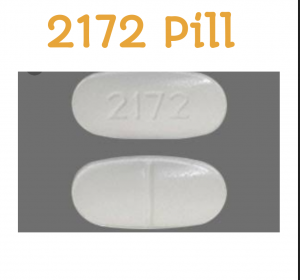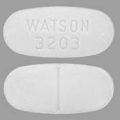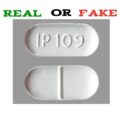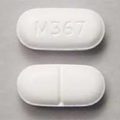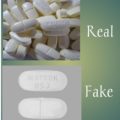2172 Pill Identification
The white, elliptical / oval pill stamped with the imprint 2172 has been identified as Acetaminophen and Hydrocodone Bitartrate 325 mg / 5 mg. It is supplied by Actavis Pharma, Inc.. Hydrocodone is a semisynthetic opiate, meaning it’s chemically manufactured based on opioid substances that are derived from the opium poppy but it’s not completely natural. It is a prescription analgesic used to treat moderate to moderately severe pain, and it’s commonly given in combination with acetaminophen. This drug binds with opioid receptors in the brain to diminish the sensation of pain. The activation of opioid receptors is also associated with increased dopamine activity in regions of the brain responsible for reward. The body produces its own substances that bind to the opioid receptors naturally to block pain, calm the body, act as an antidepressant, and slow breathing.
The other component of 2172 pill (Acetaminophen) belongs to a class of drugs called analgesics (pain relievers) and antipyretics (fever reducers) used to treat many conditions such as headache, muscle aches, arthritis, backache, toothaches, colds and fever. Acetaminophen exerts its analgesic activity by inhibiting prostaglandin synthesis while hydrocodone exerts its analgesic activity by binding to the mu-receptors in the central nervous system (CNS), thereby mimicking the effects of endogenous opioids.
Can 2172 Pill make you high?
People who take potentially addictive drugs like 2172 white pill as prescribed rarely abuse them or become addicted. But taking them not as prescribed or for a longer period of time increases the risk of addiction. Studies suggests that up to one-third of people who take opioids for chronic pain misuse them, and more than 10 percent become addicted over time. A high is possible when people take larger doses or abuse the drug. A ‘high’ from hydrocodone will include a sense of euphoria and often elevated well-being. Known risk factors of 2172 pill and addiction include:
- Poverty
- Unemployment
- Family history of substance abuse
- Personal history of substance abuse
- Young age
- History of criminal activity or legal problems including DUIs
- Regular contact with high-risk people or high-risk environments
- Problems with past employers, family members and friends (mental disorder)
- Risk-taking or thrill-seeking behavior
- Heavy tobacco use
- History of severe depression or anxiety
- Stressful circumstances
- Prior drug or alcohol rehabilitation.
Side Effects
Using drugs like 2172 white pill can produce side effects such as nausea, vomiting, dizziness, or drowsiness, constipation and light-headedness may occur. Some of these side effects of pill 2172 may decrease after you have been using this medication for a longer period. If any of these effects persist or worsen, inform your doctor or pharmacist immediately. SEE: What is K 56 pill?
How to Spot A 2172 Pill Fake
According to the Center for Disease Control, a large percentage of fake pain pills such as counterfeit 2172 actually contain fentanyl and not hydrocodone. Fentanyl is responsible for the high death rates associated with opioid in recent years. Fentanyl is a potent opioid receptor agonist, and can cause significant central nervous system and respiratory depression and has been implicated in multiple outbreaks in the past decade. It is 50 to 100 times stronger than morphine. The U.S. Drug Enforcement Administration (DEA) classified it as a Schedule II prescription drug due to its high likelihood of misuse and addiction.
The distribution of counterfeit 2172 pill represents a major public health threat given the potentially lethal nature of the pills. Identifying fentanyl can be very tricky, especially when it is laced into other drugs. It can be almost impossible to tell that it is present just by looking at it because it has no odor or taste, and it’s invisible, so using a testing kit is the only way you can tell if it’s in your drugs. A fake 2172 white pill can be tested for fentanyl contamination using Rapid fentanyl test strips (FTS), which are used to detect fentanyl in illicit drugs prior to consumption. A study conducted by a team of researchers led by Brandon Marshall, an associate professor of epidemiology at Brown University’s School of Public Health, reported that 45 percent of participants who detected fentanyl using the test strips reported using smaller amounts, 42 percent proceeded more slowly when using, and 39 percent used with someone else present. The qualitative interviews found similar changes in behavior to reduce the risk of an overdose. SEE: RP 10 325 fake vs real

